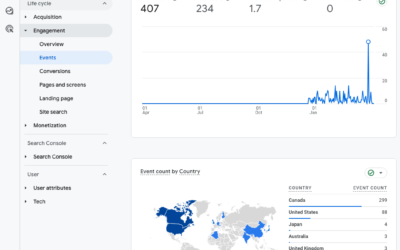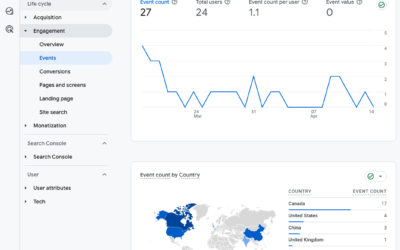
The Data Output Is Only As Good As The Data Input (… or 3 tips for better Google Analytics reporting)
As we look forward to the end of Q1 I want to share with you some tips for Google Analytics reporting that will help you benchmark your progress and plan for better results in upcoming quarters.
#1 Goals & Funnels
Google Analytics > Admin
- Conversion tracking in Google Analytics—or goal tracking—makes it easier to understand which channels are effective at generating traffic and revenue. If you don't have an ecommerce site, then goals can be used to reveal which channels drive more actively engaged audiences than others.
- Think about conversions, or goals, as actions you want your website visitors to take: buy, sign-up, register, download, exit via a retail link, comment/review/share.
- Setting up goals is a way to tell Google Analytics what actions you care about and want to track.
- Learn how to set up goals: https://www.boxcarmarketing.com/goal-tracking-in-google-analytics
#2 Exit Rate
Google Analytics > Behavior > Site Content > Exit Pages
- Knowing the last page people are on before they exit your website can be a real opportunity. If it's a blog page with external links to other resources then maybe it makes sense for people to exit your site to gain more information elsewhere. But if it's a shopping cart page, a contest page, a product detail page then can you add a call to action, streamline any forms, make the copy more action oriented?
- Use the Exit Pages report to pinpoint pages that have high traffic and high exit rates. For example, if your site has an average exit rate of 50%, then look at the top 10 pages on your site and investigate any with +50% exit rates.
- The report does not tell you why people are leaving, just that they are leaving. If you think like a first-time visitor to the page, can you improve the experience? Note the pages you modify, then track their performance over a few months. Does the exit rate improve?
#3 Cross-domain tracking
Google Analytics > Admin + some code adjustments
- If you have traffic moving between multiple websites, like from your main site to a blog and back (example.com <-> blog.example.com), or to a third-party ecommerce or event-ticketing site, then you want to make a few adjustments to your Google Analytics code so that Google knows to track those website visitors as they move between your various sites.
- Learn how to set up cross-domain tracking in Google Analytics. This is a quick overview with links to Google Support: https://www.boxcarmarketing.com/tracking-two-domains-with-the-same-google-analytics-code
Bonus: Behavior Flow
Google Analytics > Behavior > Behavior Flow
- How website visitors behave on the site—how they navigate through your website—can reveal whether you are nudging people to where you want them to go, or if they are bumping around without a clear path.
- The Behavior Flow report is a visualization of the paths people follow on your website. Use Behavior Flow for valuable insight into where people go after key landing pages, or how visitors from different campaigns navigate through the site.
- Need help: https://www.socialmediaexaminer.com/google-analytics-how-to-analyze-behavior-of-site-visitors-andy-crestodina/
Happy reporting!


